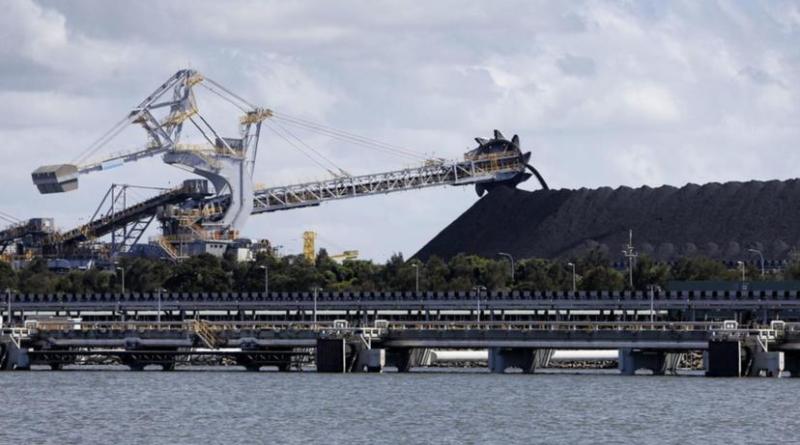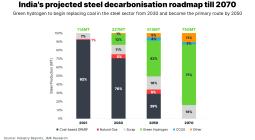India's furnaces not the answer for Aussie coal exports

A rapidly modernising India will replace China as the world’s key steel growth market but their blast furnaces won’t be reliant on Australian coal, researchers predict.
Much of India’s planned increase in steel-making capacity is based on coal-fired facilities, which Australian coal exporters are pinning their hopes on to replace declining demand from China.
But rising metallurgical coal imports into India will be hit by the increasing use of green hydrogen in its steel industry after 2030, according to a report released by the independent Institute for Energy Economics and Financial Analysis (IEEFA) on Friday.
Although, the market is unlikely to absorb the extra cost of green steel without intervention by governments, co-author Jyoti Gulia said.
As it becomes cheaper, green hydrogen is expected to be used in 12 per cent of Indian steelmaking by 2030 when coal’s share of steel production is forecast to drop to 70 per cent - compared to 92 per cent in 2021.
India’s giant Tata Steel has successfully trialled injecting a small amount of hydrogen into steelmaking and is building a hydrogen plant in the Netherlands.
Border taxes for emissions-laden imports, which would sharply increase the cost of conventional Indian and Chinese steel, are also expected to motivate the switch to hydrogen.
A further problem for Australian coal miners is that India intends to diversify its sources by buying more from Russia and Mongolia and producing more of its own coking coal.
Meanwhile, China is increasing domestic coal production and aims to recycle more scrap steel, which will further depress demand for metallurgical coal imports from Australia.
The world’s largest steel maker China Baowu plans to exit Australian metallurgical coal, and has paid almost $300 million to get out of a port and rail contract with Wiggins Island Coal Export Terminal in Queensland, according to the AFR.
Baowu is working with Rio Tinto and Fortescue on making green steel products using Pilbara iron ore and green hydrogen.
Stoked by supportive government policy and carbon penalties for heavy polluters, green hydrogen should account for almost half of India’s steel production by 2050 and coal will have dropped to less than a third.
By 2070, no coal will be used in Indian steelmaking, according to the IEEFA report.
“The first step is a definition for green steel, without which the technology track that the industry should follow remains unclear,” co-author Vibhuti Garg said.
The report also recommended mandating the use of green steel in public infrastructure to help stimulate demand.
PHOTOS: Darren Pateman/AAP - Australian coal exporters are pinning their hopes on India replacing declining demand from China.





